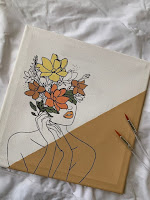Art in the Digital Age: The Impact of Social Media on Artists and Art Consumption
The digital age has revolutionized every aspect of our lives, including the world of art. With the rise of social media platforms, artists now have unprecedented opportunities to showcase their work, reach a global audience, and connect with art enthusiasts like never before. However, along with its advantages, the digital realm has also presented new challenges and complexities for artists. In this blog post, we will explore the profound impact of social media on artists and art consumption in the contemporary art landscape.
1. Wider Reach and Accessibility:
Social media platforms such as Instagram, Facebook, and Twitter have transformed the art world into a more inclusive and accessible space. Artists can now share their creations instantly with a vast audience, transcending geographical limitations. This exposure allows artists to gain recognition, build a following, and attract potential buyers or gallery owners who may have otherwise been inaccessible. As a result, emerging artists have a chance to establish their careers more easily, as social media acts as a democratizing force in the art industry.
2. Building Personal Brands:
In the digital age, artists have become more than just creators; they have also become personal brands. Social media provides a platform for artists to cultivate a unique online presence, curating their portfolios, sharing their artistic process, and engaging directly with their audience. By crafting an authentic and consistent brand, artists can differentiate themselves and establish a loyal following. This direct interaction also allows artists to receive immediate feedback, fostering a sense of community and dialogue around their work.
3. Redefining Art Consumption:
Social media has fundamentally altered the way we consume and appreciate art. With platforms like Instagram, art is no longer confined to galleries or museums. It now permeates our daily lives, appearing in our feeds as we scroll through our smartphones. This constant exposure to art has the potential to shape our tastes, broaden our artistic horizons, and introduce us to new artists and styles. Art has become more democratic, reaching audiences who may have previously felt excluded from the traditional art world.
4. Challenges and Criticisms:
While social media offers unprecedented opportunities, it also presents challenges for artists. The pressure to constantly produce and share content can be overwhelming, leading to a focus on quantity rather than quality. Artists may feel compelled to cater to the preferences of social media algorithms or create work solely for viral potential, compromising their artistic integrity. Additionally, the digital realm exposes artists to harsh criticism and online trolls, affecting their mental well-being and self-esteem.
5. New Avenues for Art Sales:
Social media has transformed the art market by offering new avenues for artists to sell their work. Artists can directly connect with collectors and art enthusiasts, eliminating the need for intermediaries like galleries or agents. Online marketplaces and platforms dedicated to selling art have gained prominence, enabling artists to reach a global customer base. However, this digital landscape also raises concerns about copyright infringement, intellectual property protection, and fair compensation for artists.
The impact of social media on artists and art consumption cannot be understated. It has redefined how artists create, share, and sell their work while offering new possibilities for recognition and connection. However, it is crucial to strike a balance between leveraging the advantages of social media and maintaining the integrity of artistic expression. As we navigate the ever-evolving digital landscape, both artists and art enthusiasts must critically engage with the opportunities and challenges presented by social media to ensure the continued growth and appreciation of art in the digital age.




Comments
Post a Comment